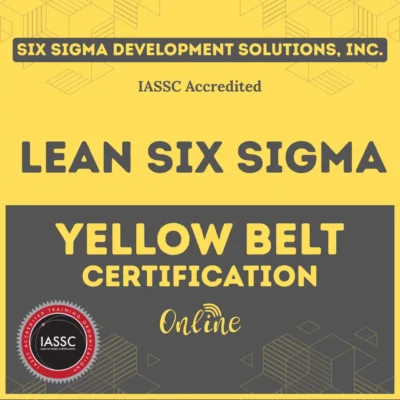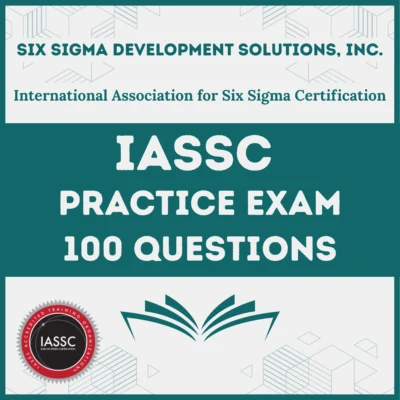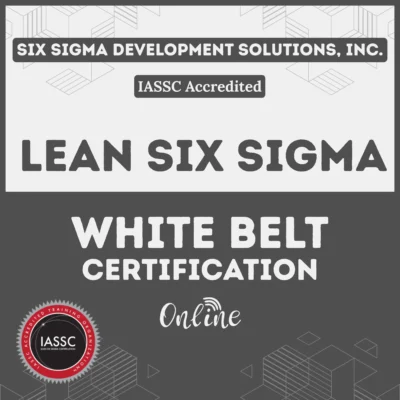Rolled Throughput Yield, often called RTY, is a crucial metric in manufacturing and business processes that helps measure the overall quality and efficiency of multi-step operations. This measurement shines a light on how well a process performs by showing the percentage of defect-free products produced through every step without needing rework.
Knowing your RTY means you understand your process deeper — where bottlenecks exist, how efficient each step is, and what you can do to boost quality and reduce costs.
This article explores the meaning of RTY, its formula, how to calculate it, its importance in quality management, and how to use it to improve processes. The goal is to present this detailed yet simple guide using clear, active language that anyone interested in Lean Six Sigma or process improvement can benefit from.
Table of contents
What is Rolled Throughput Yield?
Rolled Throughput Yield measures the probability that a product will successfully pass through an entire process without defects or rework. Unlike simple yield or first-pass yield that looks at one step, RTY aggregates all steps, multiplying the yields at each stage to reveal the overall effectiveness from start to finish.
RTY answers a vital question: If you start with 100 units, how many will successfully complete every step without flaws? This measurement captures the hidden inefficiencies that other metrics might miss, helping teams identify where defects accumulate and projects lose value.
Importance of RTY

Businesses aiming for high quality and efficiency need more than short-term or isolated performance metrics. RTY provides a holistic view of process effectiveness, taking every procedure into account.
- Reveals hidden waste: RTY accounts for rework and defects that accumulate at different stages, showcasing the real cost of quality issues.
- Supports continuous improvement: It highlights bottlenecks and weak points needing attention.
- Aligns with Six Sigma goals: RTY is a preferred measure in Six Sigma methodology for defect reduction and process optimization.
- Drives customer satisfaction: Improving RTY means delivering more defect-free products consistently.
Public, Onsite, Virtual, and Online Six Sigma Certification Training!
- We are accredited by the IASSC.
- Live Public Training at 52 Sites.
- Live Virtual Training.
- Onsite Training (at your organization).
- Interactive Online (self-paced) training,
Rolled Throughput Yield Formula and Calculation
The RTY formula is straightforward: multiply the yield of each individual process step. Yield for a step is the ratio of defect-free units produced divided by the units entering that step.

Where:
Example Calculation
Imagine a process with four steps whose yields are:
- Step 1 Yield: 98% (0.98)
- Step 2 Yield: 95% (0.95)
- Step 3 Yield: 97% (0.97)
- Step 4 Yield: 99% (0.99)
The RTY is:

This means out of 100 units starting this process, about 89 will pass through all steps without defects.
How to Calculate Rolled Throughput Yield?
- Identify every process step.
- For each step, collect data on units entering and units with no defects leaving.
- Calculate the yield for each step.
- Multiply all yields to get the RTY for the entire process.
Using a Calculator or Excel
Many professionals use RTY calculators or Excel spreadsheets where data input automatically computes yields and the overall RTY. Excel formulas using simple multiplication can quickly show your process health.
Also Read: Training & Mentoring Six Sigma Green & Yellow Belts for Success
RTY vs. Other Quality Metrics
Understanding the difference between RTY and related measures like First Pass Yield (FPY) and Defects Per Unit (DPU) is essential.
| Metric | Description | Use Case |
| First Pass Yield | Percentage that passes each step without rework | Focus on individual step quality |
| Rolled Throughput Yield | Product of all step yields (overall process yield) | Overall process effectiveness and defect-free rate |
| Defects Per Unit | Average defects per unit produced | Measures defect frequency rather than success |
RTY is a more accurate measure when processes involve multiple steps, offering a realistic view of quality instead of optimistic isolated figures.
Role of RTY in Six Sigma and Lean
Lean Six Sigma projects emphasize defect reduction and waste elimination. RTY aligns perfectly by capturing the cumulative effect of all defects in a process, sometimes called the “hidden factory.”
Reducing defect rates and improving RTY leads directly to:
- Lower costs due to less rework and scrap
- Shorter cycle times
- Improved product quality and customer satisfaction
Practical Tips to Improve RTY

- Focus on weakest steps: Use RTY to identify steps with the lowest yield and target improvements there.
- Reduce rework: Streamline processes and train team members to minimize errors.
- Collect accurate data: Reliable yield calculation depends on good data.
- Use continuous improvement tools: Apply DMAIC and root cause analysis on problem areas.
- Integrate automation where possible: Reduce human error and variation.
Also Read: PayOff Matrix
Frequently Asked Questions (FAQs) on RTY
What does RTY mean in process improvement?
RTY stands for Rolled Throughput Yield, measuring the likelihood a product passes all process steps defect-free.
How is RTY calculated?
By multiplying the yields (ratios of defect-free outputs to inputs) of every process step.
Why is RTY important for Six Sigma?
It provides a comprehensive measure of process quality, helping identify hidden wastes and improvement opportunities.
What is the difference between RTY and First Pass Yield?
First Pass Yield measures individual step quality, while RTY combines all steps for an overall process quality score.
Is RTY applicable only to manufacturing?
No, RTY can be applied in any multi-step process, including services and administrative workflows.
Final Words
Rolled Throughput Yield is a vital metric for understanding and improving the true quality and efficiency of processes. Unlike individual step yields, RTY captures the cumulative effect of defects and rework throughout an entire process. This comprehensive insight enables businesses to pinpoint problem areas, reduce waste, and increase customer satisfaction.



















